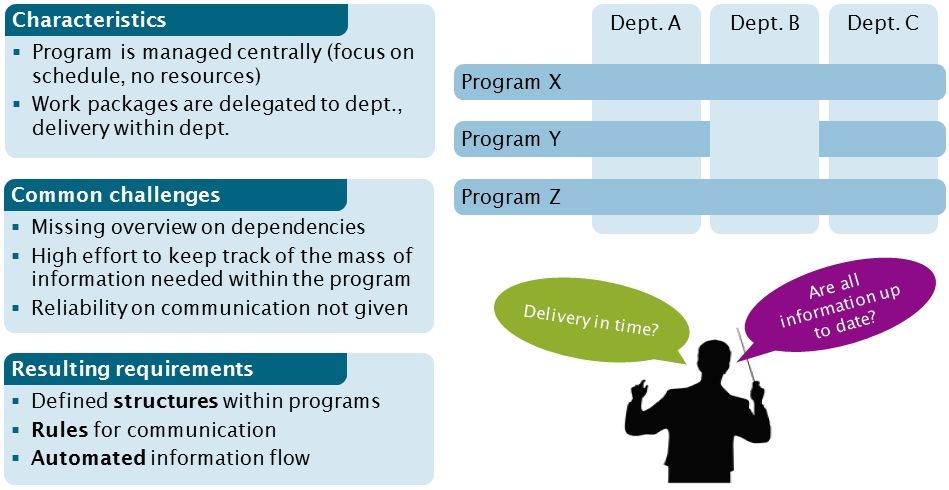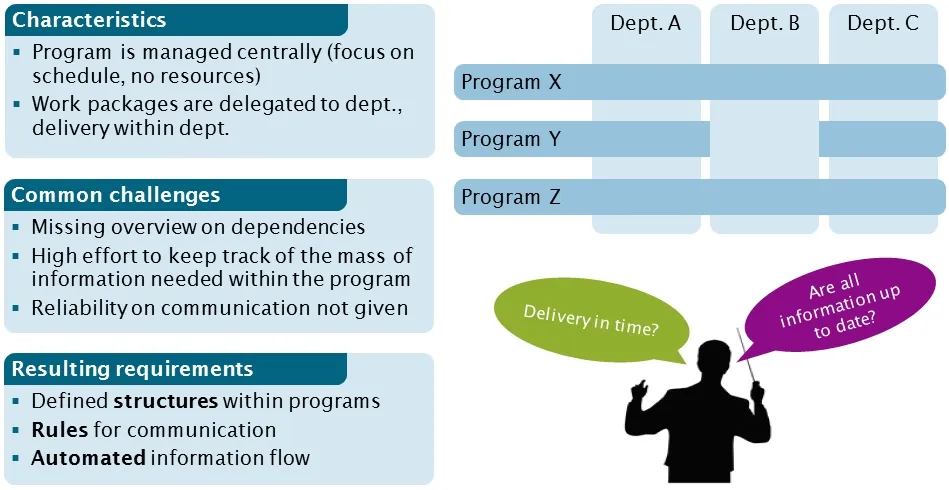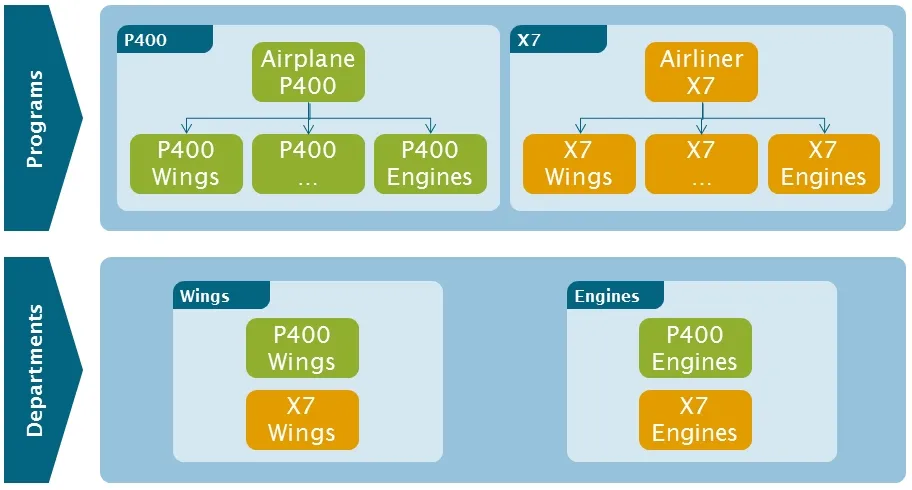How Program Management in Matrix Organizations Works
March 6, 2012
Program management in matrix organizations differs from classic project management: work packages are delegated to departments while the program manager owns structure and schedule.
I share this because matrix organizations are the reality in many enterprises – understanding roles, conflicts and integration points is key to deliver results in complex setups.

Maturity has an immense leverage on the success of programs with many dependencies. Organizations with high maturity have ~30% more probability to deliver successful results than those with low maturity (details in my last article).
Within this article you’ll gain an understanding of how program management works in matrix organizations of large enterprises. These experiences are based on multiple projects I’ve performed for various clients. Those DAX-listed companies span a variety of industries such as chemical, energy, manufacturing, information technology, etc.
We’ve observed that program management is conducted slightly differently than usual project management. In a regular project, all competencies are tied together with the project manager (structure, schedule, resources, etc.).
In our cases, the program manager is responsible for the WBS (work breakdown structure) and the schedule, but explicitly not responsible for the resources and their management. This leads to the following picture:

A program is structured and scheduled by a program manager. The work packages are defined as deliverables and delegated to the designated departments. Within the departments, work packages are detailed and staffed with resources. Let’s break this down with an example from the airline industry:

The program is structured into work packages delivered by departments (e.g. Wings and Engines). Tasks are scheduled in the program context. Departments, on the other side, structure their work by programs (e.g. P400, X7). Work items are detailed, planned and executed here.
The challenge is to create an integrated solution that highlights deviations to manage conflicts. If you are interested in how to address these conflicts, stay tuned for the next post or visit my session at the Microsoft Project Conference (#mspc12) in Phoenix, AZ, March 20–22 (abstract for session #pc310).
You’ve seen how program management is conducted in matrix organizations of large enterprises. The next article in this series will focus on the different roles and how their goals compete with each other.
Ingo Meironke, PMP – Manager at Campana & Schott - @meiroTweet